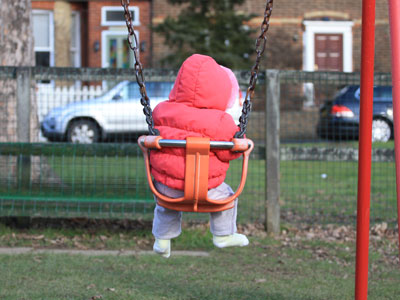
Most local authorities have seen child protection referrals increase over the past year, although a few have seen decreases of 30% or more, according to research from the Association of Directors of Children’s Services (ADCS).
The number of children on a child protection plan increased by 51% between 2007-8 and 2011-12, the study showed. But this overall increase masked significant variation at a local level, with some authorities seeing rises of up to 100% in some types of activity, while others reporting decreases of 30% or more.
Directors who had seen an increase in referrals expected pressures to continue to rise in future years.
Those who had seen a decrease in child protection referrals attributed it to improved early help services, better multi-agency working and speeding up the process of finding permanent placements for children.
However, ADCS president Debbie Jones warned against seeing early help services as “quick fix or magic bullet”, adding that they require “sustained and sustainable funding over a number of years to have the effect that we are all seeking”.
The study showed more child protection plans are being categorised as “multiple”, involving more than one form of abuse, which correlates with evidence that social workers are faced with increasingly complex caseloads.
While neglect was the most commonly-cited reason for children to be referred, qualitative research found a deepening concern about rising domestic violence issues.
The research also showed that 40% of looked after children had not been in a stable placement for the last three years. However, 40 local authorities reported changing the placement of a looked after child because of a risk of sexual exploitation during the same period.
Related articles


 Bournemouth, Christchurch and Poole
Bournemouth, Christchurch and Poole  Hampshire County Council
Hampshire County Council  Lincolnshire County Council
Lincolnshire County Council  Norfolk County Council
Norfolk County Council  Northamptonshire Children’s Trust
Northamptonshire Children’s Trust  South Gloucestershire Council
South Gloucestershire Council  Wiltshire Council
Wiltshire Council  Wokingham Borough Council
Wokingham Borough Council  Children and young people with SEND are ‘valued and prioritised’ in Wiltshire, find inspectors
Children and young people with SEND are ‘valued and prioritised’ in Wiltshire, find inspectors  How specialist refugee teams benefit young people and social workers
How specialist refugee teams benefit young people and social workers  Podcast: returning to social work after becoming a first-time parent
Podcast: returning to social work after becoming a first-time parent  Podcast: would you work for an inadequate-rated service?
Podcast: would you work for an inadequate-rated service?  Family help: one local authority’s experience of the model
Family help: one local authority’s experience of the model  Workforce Insights – showcasing a selection of the sector’s top recruiters
Workforce Insights – showcasing a selection of the sector’s top recruiters 

 Facebook
Facebook X
X LinkedIn
LinkedIn Instagram
Instagram
Comments are closed.